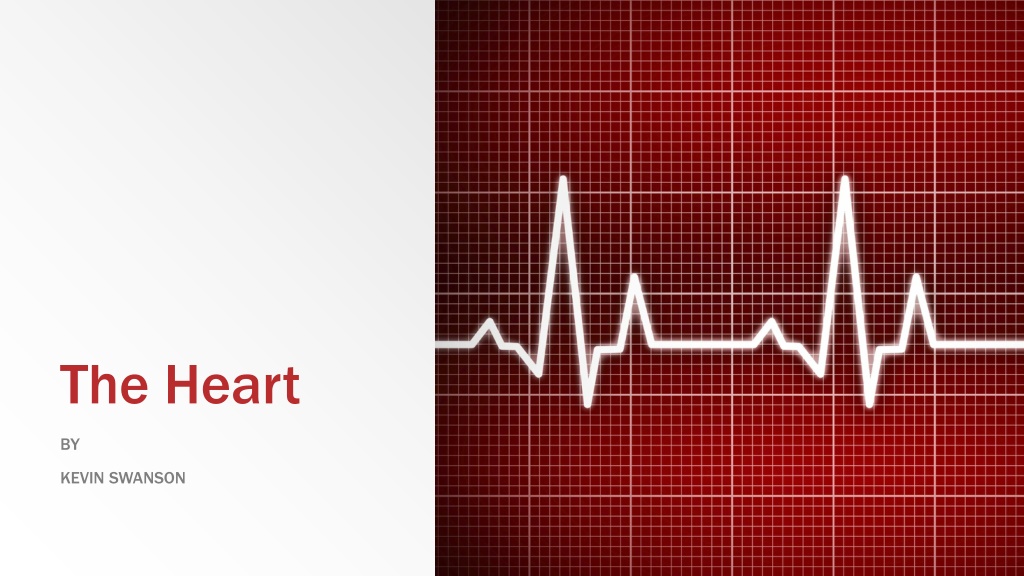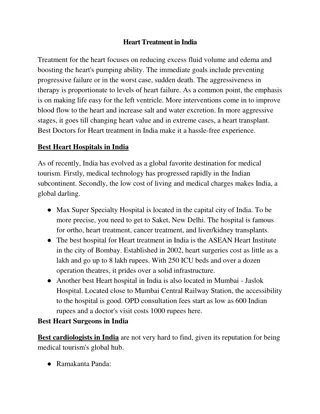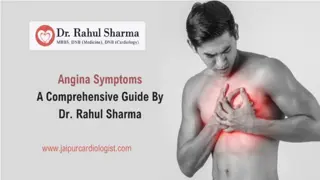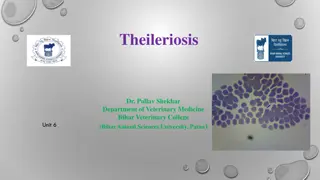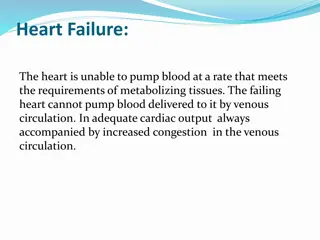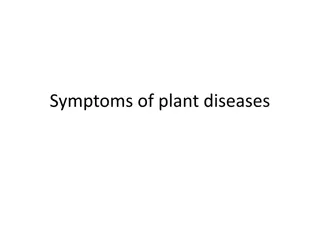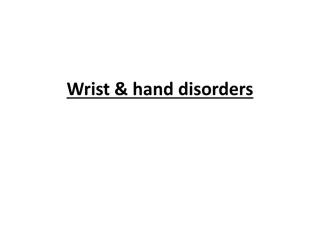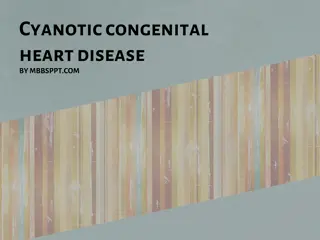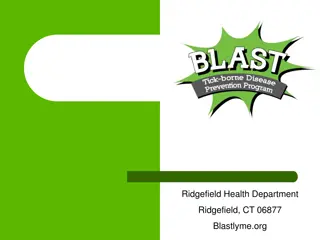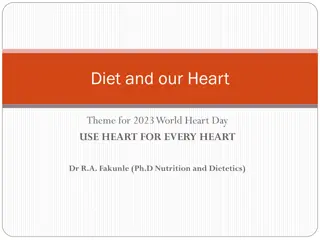Understanding Heart Disease: Causes, Symptoms, and Common Conditions
Heart disease, a prevalent health issue in the United States, encompasses various cardiovascular conditions like coronary artery disease and hypertension. It is a leading cause of death, often resulting from conditions that can lead to heart attacks or failure. Symptoms of heart conditions vary, from chest pain to difficulty breathing. Diagnostic tests like METS evaluations help in assessing heart function and detecting blockages in arteries. Learn more about heart disease and its impact on health.
Download Presentation

Please find below an Image/Link to download the presentation.
The content on the website is provided AS IS for your information and personal use only. It may not be sold, licensed, or shared on other websites without obtaining consent from the author. Download presentation by click this link. If you encounter any issues during the download, it is possible that the publisher has removed the file from their server.
E N D
Presentation Transcript
The Heart BY KEVIN SWANSON
38 CFR References 4.104 Schedule of ratings cardiovascular system 3.105 (e) Revision of decisions - Reduction in evaluation compensation 1155 - Authority for schedule for rating disabilities
What is Heart Disease? Heart disease is an umbrella term, meaning it can be applied to a broad variety of heart conditions, or cardiovascular conditions. Heart disease is also extremely common in the United States.
What is Heart Disease? Heart disease causes 1 in 4 deaths in the United States making it the country s leading cause of death. Many of the conditions classified as heart disease can often lead to heart attack or heart failure.
Most Common VA Heart Conditions Coronary Artery Disease (CAD) Coronary artery disease, or CAD, represents the most common type of heart disease. It occurs when the arteries that supply blood to the heart muscle become hardened and narrow. Coronary artery disease is usually due to the buildup of cholesterol and other material, called plaque, on the arteries inner walls.
Most Common VA Heart Conditions Coronary Artery Disease (CAD) Symptoms of coronary artery disease include: Pain or discomfort in the upper body, such as the arms, back or neck Difficulty breathing Sweating Indigestion
Most Common VA Heart Conditions Hypertension Hypertension is another name for high blood pressure. Blood pressure is determined both by the amount of blood your heart pumps and the amount of resistance to blood flow in your arteries. The more blood your heart pumps and the narrower your arteries, the higher your blood pressure.
Metabolic Equivalent Tests What Is a METS Test? The METS evaluation is also called a stress test. During this test, a patient exercises often on a treadmill or an exercise bike and medical professionals determine if the coronary arteries that move blood to and from the heart are blocked by plaques or fatty deposits. Doctors look for 70 percent or more blockage. The METS test also assesses how well your heart is functioning and getting oxygen.
4.104 Schedule of Ratings - Cardiovascular System. Diseases of the Heart [Unless otherwise directed, use this general rating formula to evaluate diseases of the heart.]
Diseases of the Heart Note (1): Evaluate cor pulmonale, which is a form of secondary heart disease, as part of the pulmonary condition that causes it.
Diseases of the Heart Note (2): One MET (metabolic equivalent) is the energy cost of standing quietly at rest and represents an oxygen uptake of 3.5 milliliters per kilogram of body weight per minute. When the level of METs at which breathlessness, fatigue, angina, dizziness, or syncope develops is required for evaluation, and a laboratory determination of METs by exercise testing cannot be done for medical reasons, a medical examiner may estimate the level of activity (expressed in METs and supported by specific examples, such as slow stair climbing or shoveling snow) that results in those symptoms.
Diseases of the Heart Note (3): For this general formula, heart failure symptoms include, but are not limited to, breathlessness, fatigue, angina, dizziness, arrhythmia, palpitations, or syncope.
General Rating Formula for Diseases of the Heart: Workload of 3.0 METs or less results in heart failure symptoms 100 Workload of 3.1-5.0 METs results in heart failure symptoms 60
General Rating Formula for Diseases of the Heart: Workload of 5.1-7.0 METs results in heart failure symptoms; or evidence of cardiac hypertrophy or dilatation confirmed by echocardiogram or equivalent (e.g., multigated acquisition scan or magnetic resonance imaging) 30 Workload of 7.1-10.0 METs results in heart failure symptoms; or continuous medication required for control 10
Temporary Rating Formula for Diseases of the Heart: Diagnostic Codes for Temporary 100% Ratings 7000 to 7123
Temporary Rating Formula for Diseases of the Heart: 7000 Valvular heart disease (including rheumatic heart disease): 7001 Endocarditis, or: 7002 Pericarditis: During active infection with cardiac involvement and for three months following cessation of therapy for the active infection 100
Temporary Rating Formula for Diseases of the Heart: 7003 Pericardial adhesions: 7004 Syphilitic heart disease: 7005 Arteriosclerotic heart disease (coronary artery disease): 7006 Myocardial infarction: During and for three months following myocardial infarction, confirmed by laboratory tests 100 Thereafter, use the General Rating Formula:
Temporary Rating Formula for Diseases of the Heart: 7007 Hypertensive heart disease: Chronic congestive heart failure, or; workload of 3 METs or less. 7008 Hyperthyroid cardiovascular diagnostic code, depending on particular findings. For DCs 7009, 7010, 7011, and 7015, a single evaluation will be assigned under the diagnostic code that reflects the predominant disability picture. heart disease: Rate under the appropriate 7009 Bradycardia (Bradyarrhythmia), symptomatic, requiring permanent pacemaker implantation: For one month following hospital discharge for implantation or re-implantation 100 Thereafter, use the General Rating Formula:
Temporary Rating Formula for Diseases of the Heart: 7011 Ventricular arrhythmias (sustained): For an indefinite period from the date of inpatient hospital admission for initial medical therapy for a sustained ventricular arrhythmia; or, for an indefinite period from the date of inpatient hospital admission for ventricular aneurysmectomy; or, with an automatic implantable cardioverter- defibrillator (AICD) in place 100
Temporary Rating Formula for Diseases of the Heart: 7015 Atrioventricular block: Benign (First-Degree and Second-Degree, Type I): Evaluate under the General Rating Formula. Non-Benign (Second-Degree, Type II and Third- Degree): Evaluate under DC 7018 (implantable cardiac pacemakers). 7016 Heart valve replacement (prosthesis): For an indefinite period following date of hospital admission for valve replacement Thereafter, use the General Rating Formula: 100
Temporary Rating Formula for Diseases of the Heart: 7017 Coronary bypass surgery: For three months following hospital admission surgery100 Thereafter, use the General Rating Formula: 7018 Implantable cardiac pacemakers: For one month following hospital discharge for implantation or re-implantation 100 Thereafter: Evaluate as supraventricular tachycardia (DC 7010), ventricular arrhythmias (DC 7011), or atrioventricular block (DC 7015). Minimum 10
Temporary Rating Formula for Diseases of the Heart: 7019 Cardiac transplantation: For a minimum of one year from the date of hospital admission for cardiac transplantation 100 Thereafter: Evaluate under the General Rating Formula Minimum 30
Temporary Rating Formula for Diseases of the Heart: 7020 Cardiomyopathy: Chronic congestive heart failure, or; workload of 3 METs or less results in dyspnea, fatigue, angina, dizziness, or syncope, or; left ventricular dysfunction with an ejection fraction of less than 30 percent 100 More than one episode of acute congestive heart failure in the past year, or; workload of greater than 3 METs but not greater than 5 METs results in dyspnea, fatigue, angina, dizziness, or syncope, or; left ventricular dysfunction with an ejection fraction of 30 to 50 percent 60
Temporary Rating Formula for Diseases of the Heart: 7020 Cardiomyopathy: Workload of greater than 5 METs but not greater than 7 METs results in dyspnea, fatigue, angina, dizziness, or syncope, or; evidence of cardiac hypertrophy or dilatation on electrocardiogram, echocardiogram, or X-ray 30 Workload of greater than 7 METs but not greater than 10 METs results in dyspnea, fatigue, angina, dizziness, or syncope, or; continuous medication required 10
DISEASES OF THE ARTERIES AND VEINS 7101 Hypertensive vascular disease (hypertension and isolated systolic hypertension): Diastolic pressure predominantly 130 or more Diastolic pressure predominantly 120 or more Diastolic pressure predominantly 110 or more, or; systolic pressure predominantly 200 or more Diastolic pressure predominantly 100 or more, or; systolic pressure predominantly 160 or more, or; minimum evaluation for an individual with a history of diastolic pressure predominantly 100 or more who requires continuous medication for control 60 40 20 10
DISEASES OF THE ARTERIES AND VEINS 7110 Aortic aneurysm: Ascending, thoracic, or abdominal: 7111 Aneurysm, any large artery: 7112 Aneurysm, any small artery: 7113 Arteriovenous fistula, traumatic: 7114 Peripheral arterial disease: 7115 Thrombo-angiitis obliterans (Buerger's Disease): 7117 Raynaud's syndrome (also known as secondary Raynaud's phenomenon or secondary Raynaud's):
DISEASES OF THE ARTERIES AND VEINS 7118 Angioneurotic edema: 7119 Erythromelalgia: 7120 Varicose veins: 7121 Post-phlebitic syndrome of any etiology: 7122 Cold injury residuals: 7123 Soft tissue sarcoma (of vascular origin) 7124 Raynaud's disease (also known as primary Raynaud's):
The End Questions?
